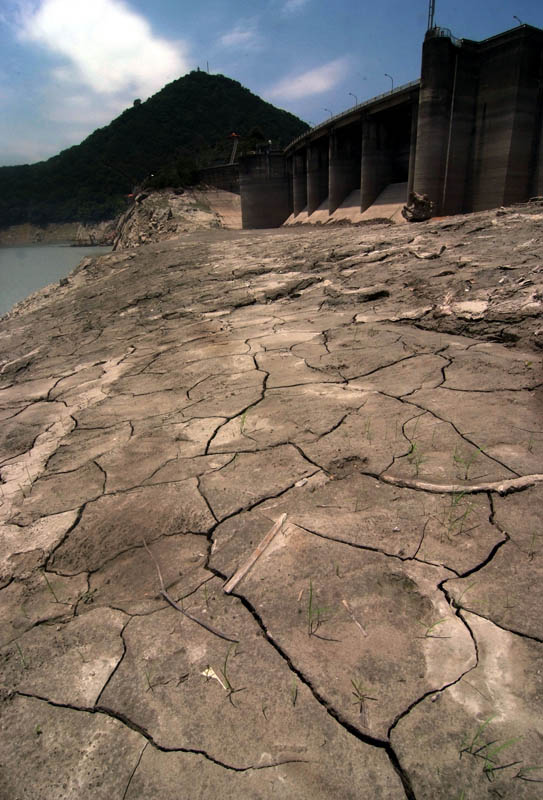Memo #352
By: Denea Bascombe – denea.bascombe [at] alumni.ubc.ca
 Although its average annual rain fall is 2.6 times the global average, Taiwan is classified by the United Nations as an area where water resources are scarce. In the summer 2015, Taiwan faced its worst water shortage on record. What happens between when the rains fall and when Taiwanese consumers access clean water? Even accounting for different historical rainfall trends in northern and southern parts of the island, there are two sets of factors driving the shortage – water management policies and climate change.
Although its average annual rain fall is 2.6 times the global average, Taiwan is classified by the United Nations as an area where water resources are scarce. In the summer 2015, Taiwan faced its worst water shortage on record. What happens between when the rains fall and when Taiwanese consumers access clean water? Even accounting for different historical rainfall trends in northern and southern parts of the island, there are two sets of factors driving the shortage – water management policies and climate change.
First, there are problems in the water management structures. Low water prices in the cities and in the agricultural areas, especially the rice-growings south, contributes to the water shortage, while northern cities such as Hsinchu struggle to meet the government’s water rationing benchmarks, as semiconductor fabrication plants require large amounts of water for operation. Ineffective soil and water conservation, a shortage of reservoirs and weirs, and inefficiencies in the existing infrastructure, such as leaking pipes, undermine retention of rainfall and exacerbate water wastage.
Second, the effects of climate change on rain patterns and locations has made rainfall more sporadic in volume and dispersion. The changes in annual rainfall have become more unpredictable as has the amount of rainfall divergence during the wet (around 80% of the annual total) and dry seasons. The relatively short and rapid rivers in Taiwan also makes them prone to flooding during the wet season and typhoons and drying out during other parts of the year.
There have been initiatives to attempt to address the chronic shortage. In March 2014, the country’s Water Resource Agency began cloud seeding to attempt to increase rainfall in the southern areas. The considerable and continuing debate about the effectiveness of the practice renders this a short rather than a long-term or sustainable solution. There are other projects that track individual reservoirs such as Tseng-Wen in the south and Shihmen in the north, simulate widespread domestic rainwater harvesting, model of sales of agricultural water to industrial sectors, among others.
However, even more investment of resources into water management solutions such as technologies for systematic water recycling and desalination of sea water is required if Taiwan is to avoid a major crisis in the long-term.
About the Author:
Denea Bascombe is a student in the University of British Columbia’s Master of Public Policy and Global Affairs program.
If you enjoyed this memo, subscribe to our e-newsletter for free and receive new memos weekly via email.

A decreased water surface exposes rocks and parched earth at the Shimen reservoir in Taoyuan, Taiwan (Credit: Taiwan Business Topics).
Links
- Gilbert Levine, Randolph Barker, and Cheng Chang Huang, “Water transfer from agriculture to urban uses lessons learned, with policy considerations,” Paddy and Water Environment, 5, no. 4 (2007): 213–222.
- Chao-Hsien Liaw, and Yu-Chuan Chiang, “Framework for Assessing the Rainwater Harvesting Potential of Residential Buildings at a National Level as an Alternative Water Resource for Domestic Water Supply in Taiwan,” Water, 6, no. 10 (2014): 3224-3246.
- Jie-Lun Chiang, and Tzu-Ming Liu “Impact of climate change on paddy field irrigation in southern Taiwan,” Paddy and Water Environment, 11, no. 1-4 (2013): 311–320.
- Chao-Chung Yang, Chao-Hsien Yeh, and Chih-Chao Ho, “Systematic Quantitative Risk Analysis of Water Shortage Mitigation Projects Considering Climate Change,” Water Resources Management, 29, no. 4 (2015):1067-1081.
- J.T. Shiau, “Water release policy effects on the shortage characteristics for the Shihmen reservoir system during droughts,” Water Resources Management 17, no. 6 (2003): 463–480.
- Ya-Wen Chiueh, “The price elasticity of transferring agricultural water to industrial water during non-drought period in Taiwan,” Paddy and Water Environment, 10, no. 1 (2012): 41–47.
- Ya-Wen Chiueh, and Cheng Chang Huang, “Willingness to Pay by Industrial Sectors for Agricultural Water Transfer During Drought Periods in Taiwan,” Environment and Natural Resources Research, 5, no. 1 (2015): 38-45.
Related Memos:
See our other memos on Taiwan.